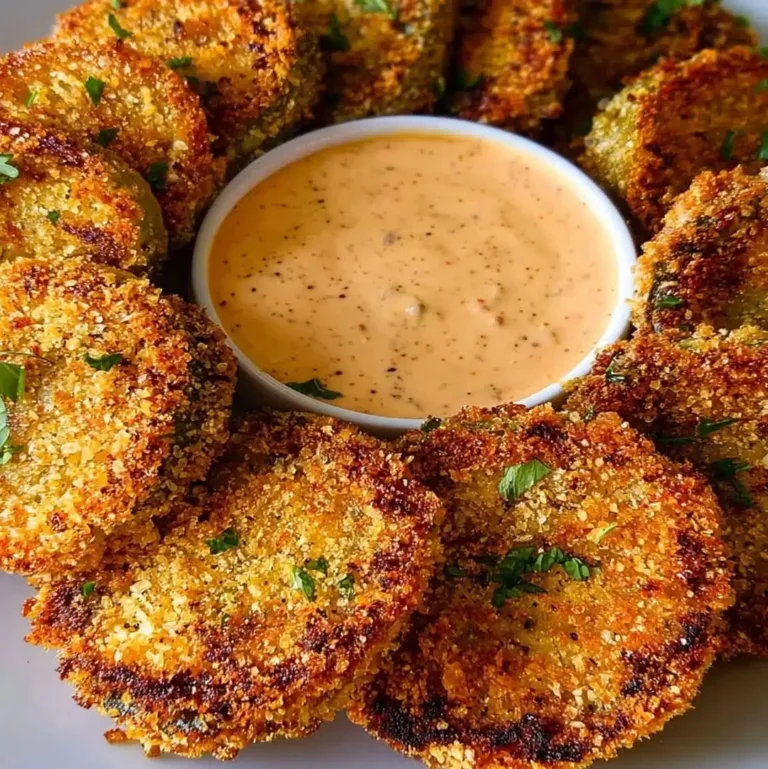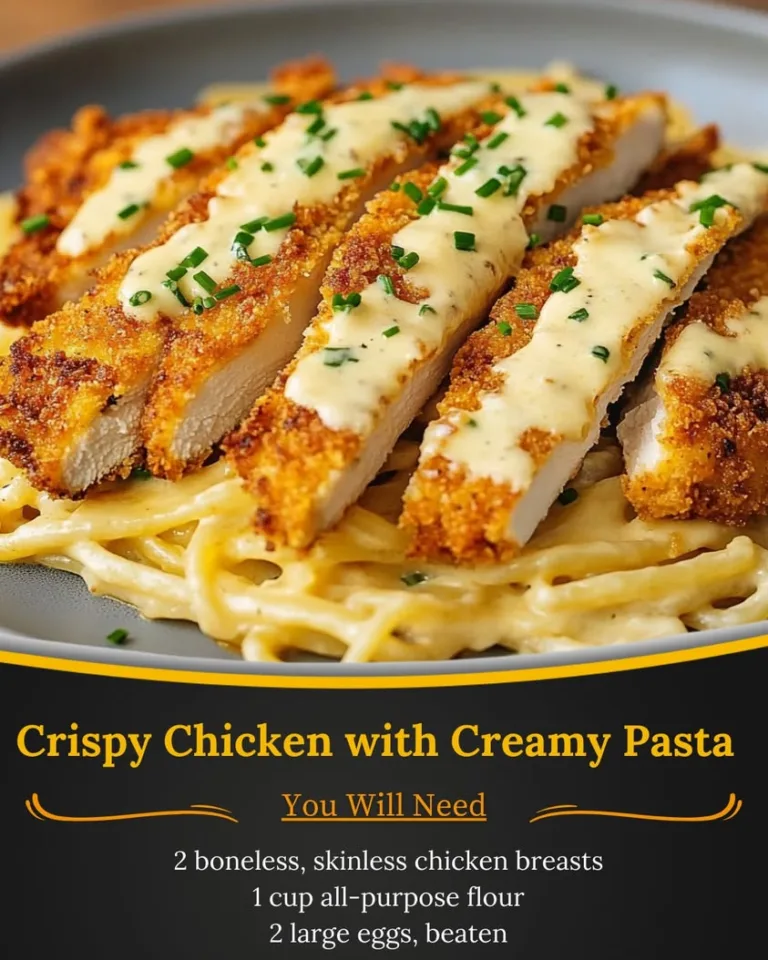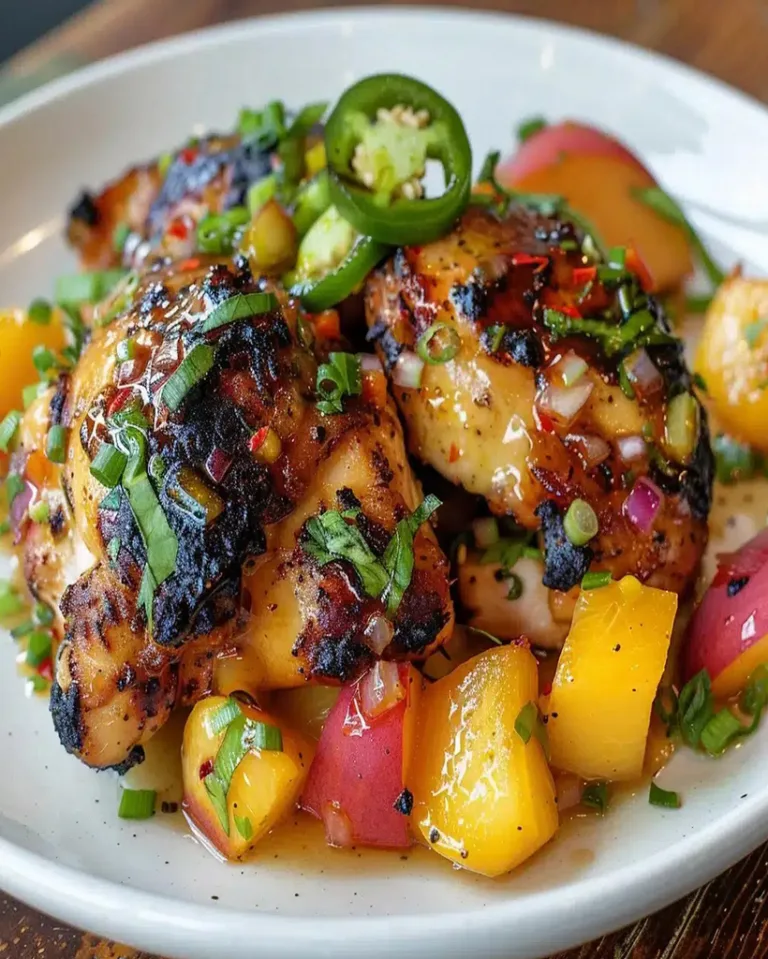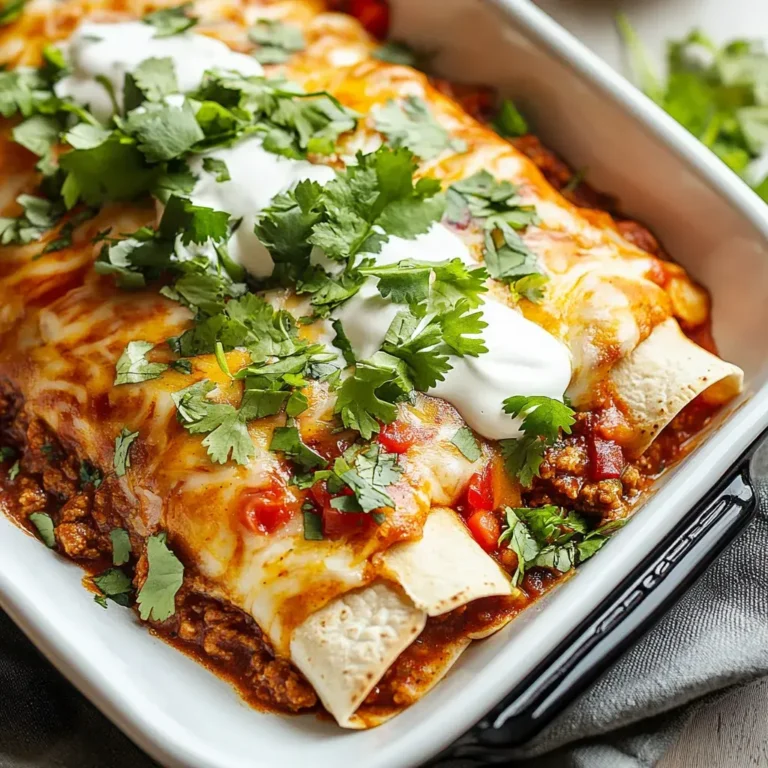Delicious Chicken Chow Mein with the Ultimate Chow Mein Sauce
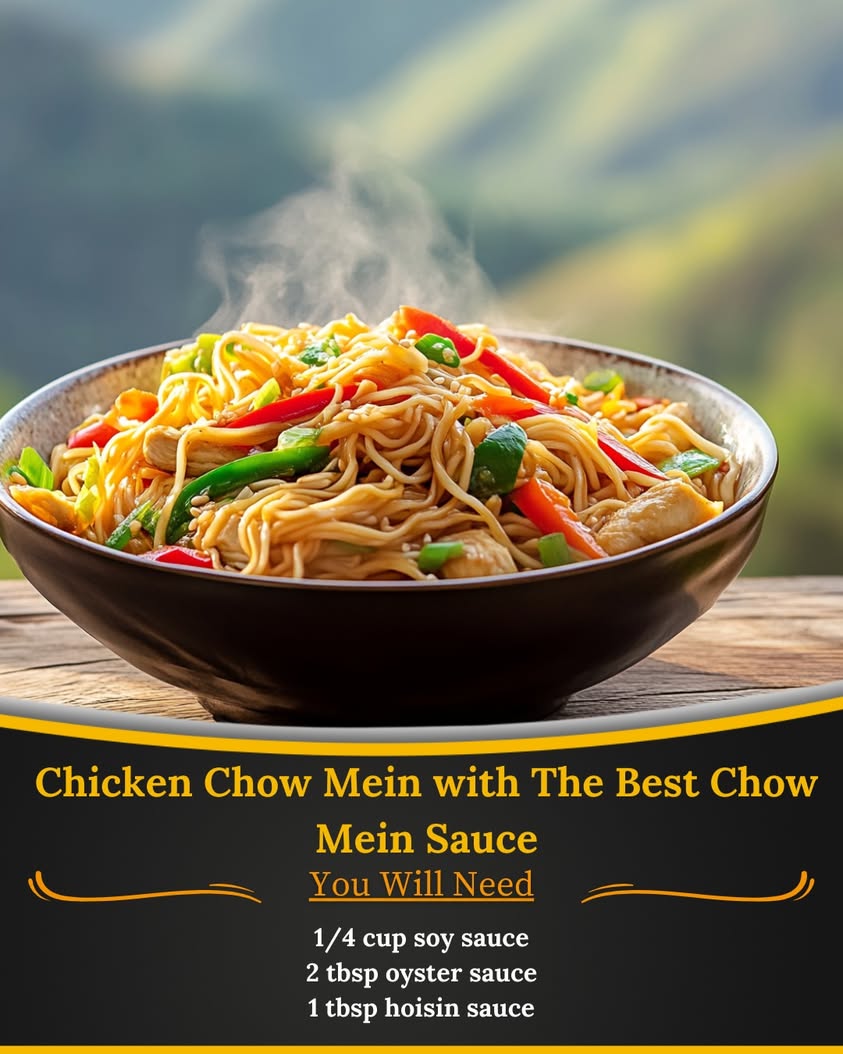
Chicken Chow Mein with The Best Chow Mein Sauce: A Flavorful Twist
Chicken Chow Mein with the best chow mein sauce is a delightful stir-fry dish that tantalizes your taste buds with each bite. Tender chicken, crisp vegetables, and soft noodles are perfectly combined, creating a medley of flavors that transport you straight to a bustling street market in Asia. This recipe not only satisfies your hunger but also brings warmth to your kitchen with its vibrant colors and delicious aroma.
The essence of chow mein lies in its sauce, and this one stands out for its rich taste and balanced texture. Made with simple ingredients, it envelops the chicken and vegetables, ensuring every element is packed with flavor. Whether you’re cooking for a family dinner or hosting friends, this easy chow mein recipe promises both comfort and elegance on your dining table.
Quick Recipe Highlights
- Flavor Profile: This Chicken Chow Mein features a savory umami taste, complemented by sweet and tangy notes from the chow mein sauce.
- Texture: The dish is a harmonious blend of soft chicken, crunchy vegetables, and springy noodles, creating a satisfying chew.
- Aroma: A fragrant mix of garlic, ginger, and soy sauce fills the air, inviting everyone to the table.
- Visual Appeal: Eye-catching colors from fresh bok choy, carrots, and bell peppers make each plate a feast for the eyes.
- Skill Level Needed: While the technique is straightforward, careful timing is essential to achieve the perfect stir-fry.
- Special Equipment: A large wok or skillet is ideal, allowing for even cooking and optimal heat distribution.
Recipe Overview
- Difficulty Level: This Chicken Chow Mein is classified as medium difficulty due to the timing of cooking ingredients and stir-frying techniques required.
- Category: It’s a versatile meal that can serve as a fulfilling dinner or as part of an Asian-inspired spread.
- Cuisine: Rooted in Chinese culinary tradition, chow mein has many regional variations, each celebrating local ingredients and flavors.
- Cost: This recipe is economical, using affordable ingredients while still delivering a gourmet-style meal at home.
- Season: Perfect for any season, chow mein can be enjoyed hot in winter or as a light meal in the summer months.
- Occasion: Ideal for family gatherings, casual dinner parties, or even a cozy night in.
Why You’ll Love This Recipe
The taste and texture appeal of Chicken Chow Mein can genuinely win hearts with its combination of savory chicken, crunchy vegetables, and chewy noodles. The dish strikes a perfect balance between sweet and salty, making each bite a burst of flavor. The chow mein sauce beautifully coats the ingredients, enhancing the overall experience and leaving you craving more after the first serving.
In terms of convenience, this recipe is a lifesaver for busy weeknights. With a prep time of just 15 minutes and an overall cook time of 20 minutes, Chicken Chow Mein is a quick meal solution that doesn’t compromise on taste. With a single cooking vessel required, cleanup is quick and easy, giving you more time to relax after a satisfying meal.
Nutritionally, this chow mein is a well-rounded option. Loaded with protein from the chicken and plenty of vegetables, it provides a healthy dose of vitamins and minerals. By using a variety of colorful veggies, you not only enhance the flavor but also boost the dish’s nutritional profile, allowing for a guilt-free indulgence.
Beyond being a meal, Chicken Chow Mein creates an opportunity for socializing. The communal nature of sharing a large platter makes it perfect for gatherings, where everyone can help themselves and enjoy conversations over delicious food. It encourages a sense of togetherness, making every meal more memorable.
Lastly, this recipe is cost-effective. With affordable ingredients and the ability to feed multiple servings, it’s an economical choice for those looking to maximize their grocery budget. By making chow mein at home, not only do you save money, but you also get to customize the flavors to your liking.
Historical Background and Cultural Significance
The origin of chow mein can be traced back to China, where it was first created as a way to utilize leftover ingredients. The name “chow mein” translates to “stir-fried noodles,” reflecting the method of cooking that defines this dish. Over the years, it has evolved, taking on various regional influences as it spread to different countries.
In many Asian cultures, chow mein holds cultural significance. It symbolizes celebrations and gatherings, often enjoyed during festive occasions with family and friends. Different cultures adapt the dish to include local ingredients and flavors, making their versions unique gem in culinary diversity.
As chow mein gained popularity worldwide, especially in Western countries, variations began to emerge. Some versions include additional proteins such as shrimp or beef, while others focus on vegetarian options. This evolution highlights the adaptability of chow mein, accommodating various dietary preferences and flavor profiles.
Regional variations of chow mein abound, with Americanized versions often featuring heavier sauces and unique toppings. These adaptations further reflect the fusion of culinary traditions that enrich the global food scene, making chow mein a beloved dish worldwide.
Ingredient Deep Dive
Chicken: Chicken is the primary protein in this dish, symbolizing sustenance in many cultures. It’s packed with iron and B vitamins, helping to boost energy levels. When selecting chicken, look for cuts with minimal moisture and ensure proper storage by refrigerating at a suitable temperature. For those preferring alternatives, tofu or tempeh can serve as great substitutes.
Chow Mein Noodles: The star of the dish, chow mein noodles, have a rich history in Chinese culinary tradition. They are typically made of wheat and provide a great source of carbohydrates. When choosing noodles, opt for fresh varieties when possible, and make sure to store them in a cool, dry place. Rice noodles and zucchini noodles can be tempting alternatives for gluten-free diets.
Common Mistakes to Avoid
- Using the wrong noodles: Not all noodles are suitable for chow mein, so be sure to use chow mein or egg noodles for the best results.
- Overcooking vegetables: Ensure vegetables remain crisp by adding them at the right time during cooking.
- Using too much sauce: A little goes a long way; too much sauce can result in a soggy dish.
- Not preheating the wok: A properly heated wok is essential for achieving that classic stir-fry sear.
- Overcrowding the wok: Cooking in batches allows for evenly cooked ingredients and prevents steaming.
- Skipping marinating the chicken: This step is crucial for adding depth to the overall flavor of the dish.
- Not prepping ingredients in advance: Having everything ready before cooking helps maintain the cooking flow.
- Ignoring seasoning after cooking: Taste and adjust seasonings at the end, as flavors can change during cooking.
- Not customizing the recipe: Feel free to add your favorite vegetables or proteins to enhance the dish.
- Skipping the garnish: Fresh herbs and seeds can elevate the visual appeal and flavor of your chow mein.
Essential Techniques
Stir-Frying: This technique involves cooking food quickly over high heat, so it’s important to master temperature control. To achieve this, preheat your wok before adding ingredients. A common pitfall is adding too many ingredients at once, which can lower the temperature and lead to steaming instead of frying. Visual cues for success include a sizzling sound when food hits the pan and a beautiful sear on the edges.
Marinating: Properly marinating chicken enhances flavor and tenderness. Use a suitable acid like soy sauce or citrus juice to help break down tough proteins. The mistake many make is under-marinating; allow the chicken to marinate for at least 30 minutes for best results. Look for a change in color and aroma as indicators of effective marination.
Pro Tips for Perfect Chicken Chow Mein
1. Always use fresh vegetables for the best flavor and texture. Frozen options can often become mushy when cooked.
2. Toast your oil before adding ingredients. This step brings out rich flavors, enhancing the whole dish.
3. Cut ingredients into uniform sizes. This ensures even cooking and makes for a more appealing presentation.
4. Experiment with sauces! Don’t hesitate to create a mix of soy, oyster, and sesame oils for an exciting twist.
5. Serve immediately after cooking. This helps retain the crispy texture of vegetables and noodles.
6. Garnish generously with fresh herbs and sesame seeds for an extra burst of flavor and color.
Variations and Adaptations
Regional variations can include adding regional spices or proteins like shrimp or beef in lieu of chicken. Seasonal adaptations allow for incorporating whatever vegetables are fresh and currently in-season. For those following specific dietary needs, gluten-free options can be made using rice noodles, while vegan adaptations can easily substitute chicken with tofu or tempeh.
Flavor variations might incorporate different sauces such as teriyaki for a sweeter profile, or Szechuan for a spicy kick. You can also modify textures by adding toasted nuts or seeds for crunch. If you fancy creativity, presentation alternatives include serving chow mein in lettuce cups or as a layered salad.
Serving and Presentation Guide
For an inviting presentation, consider plating chow mein in large, shallow bowls to showcase the colorful ingredients. To elevate the dish, garnish with sliced green onions or sesame seeds just before serving. Accompany your chow mein with traditional sides like dumplings, spring rolls, or a fresh salad for a well-rounded meal.
Temperature is key—serve chow mein hot off the stove for the best experience. For portion control, serve in individual portions to prevent friend lifting and ensure everyone enjoys an equal share. Family style serving can work well too, allowing guests to serve themselves.
Wine and Beverage Pairing
When it comes to wine pairings, a crisp Riesling or a light Pinot Noir compliments the flavors of Chicken Chow Mein beautifully. For non-alcoholic options, a refreshing iced tea or Sparkling Seltzer with lemon can balance out the savory dish effectively. Should a hot beverage feel more appealing, jasmine tea serves as an aromatic and gentle companion.
Storage and Shelf Life
To store Chicken Chow Mein, place any leftovers in airtight containers in the refrigerator. Ideally, it should be consumed within 2-3 days for optimal freshness. When freezing, consider separating noodles and sauce to maintain texture upon reheating. Signs of spoilage include an off smell, excess moisture, or discoloration, indicating that the dish is no longer safe to eat.
Make Ahead Strategies
Prep vegetables and marinate chicken ahead of time to save on cooking duration. Store ingredients separately in the refrigerator and assemble all parts shortly before cooking for the best flavor retention. Utilize simple reheating methods for leftovers, such as a quick microwave or wok reheating method to avoid overcooking or drying out ingredients. Adding fresh herbs or lime juice when reheating can elevate flavors anew.
Scaling Instructions
Halving the recipe may require adjusting the ingredient ratios as well as cooking time, so ensure to taste and adjust seasonings accordingly. Doubling or tripling may also necessitate cooking in batches to avoid overcrowding the wok, which can lead to uneven cooking. Be mindful of managing timing and keeping an eye on ingredient temperature for less stress during preparation.
Nutritional Deep Dive
This Chicken Chow Mein serves as a balanced meal with a macro breakdown that includes quality proteins from chicken and a healthy dose of carbohydrates from the noodles. Micronutrient analysis reveals the inclusion of various vitamins and minerals showcased within the colorful veggie medley. Those looking to maintain weight management should consider portion sizes and ingredients’ caloric content, while still enjoying several servings of vegetables in each meal.
Dietary Adaptations
For gluten-free adaptations, swap out traditional noodles for rice or vegetable noodles. Dairy-free adaptations can be made by ensuring your sauces do not contain any dairy content. Vegan alternatives can include substituting chicken with mushroom or tofu. For low-carb remakes, cauliflower rice or spiralized vegetable noodles are great options to maintain texture without carbohydrates.
Troubleshooting Guide
Texture issues often arise from overcooking vegetables or noodles. To remedy, cut vegetables into larger sizes to ensure firmness and avoid mushiness. If flavor balance seems off, try adding a pinch of sugar or a dash of vinegar to adjust taste. Should you run into temperature issues, ensure cooking ingredients at high heat upfront and adjust based on the efficiency of your cooktop.
Recipe Success Stories
Community feedback often highlights the versatility of this Chicken Chow Mein recipe, with readers sharing various modifications they tried. Many have found success in integrating personal favorite sauces or vegetables that reflect their preferences. Others share their plating techniques and photography tips, showcasing beautiful chow mein dishes that inspire others to recreate this recipe.
Frequently Asked Questions
Can I use different protein sources in this Chicken Chow Mein? Absolutely! You can substitute chicken with shrimp, beef, or even tofu for a vegetarian option.
How can I make this dish spicier? For a spicier chow mein, you can add Szechuan pepper or drizzle some chili oil before serving.
What if I can’t find chow mein noodles? You can use egg noodles, spaghetti, or rice vermicelli as a suitable substitute.
Can I freeze leftovers? Yes, Chicken Chow Mein can be frozen. Just separate the sauce and noodles to maintain texture.
How do I reheat the noodles without them becoming mushy? To reheat, use a hot skillet or wok to avoid steaming, which keeps them from drying out.
What should I serve with chow mein? Complement your chow mein with spring rolls, dumplings, or a light vegetable salad for a complete meal.
How long does chicken chow mein last in the refrigerator? Leftovers can typically last 2-3 days in the refrigerator when stored properly.
Is chow mein gluten-free? Traditional chow mein is not gluten-free; however, you can use gluten-free noodles to create a suitable version.
Can I add more vegetables to this recipe? Yes! Feel free to include any seasonal or preferred veggies to make it even healthier.
What can be used in place of soy sauce for a lower-sodium alternative? You can use low-sodium soy sauce or coconut aminos as a healthier substitute.
Additional Resources
For more culinary inspiration, check out related recipes such as beef stir-fry, vegetable lo mein, or homemade spring rolls. Explore technique guides that dive deeper into stir-frying, marinating, and ingredient selection. You can also find equipment recommendations to assist in your cooking journey, ensuring you have the right tools for every meal. Seasonal variations can spark exciting ideas to keep your meals fresh and engaging throughout the year.
Join the Conversation
We’d love to see your take on Chicken Chow Mein, so share your photos on social media and tag us! Engaging with our community not only showcases your culinary skills, it also inspires others to explore this delightful recipe. Don’t forget to leave your thoughts and variations in the comments section; feedback helps us improve and adapt our recipes better to suit your needs!
The Recipe
Chicken Chow Mein with The Best Chow Mein Sauce
Serves: 4 servings
Prep Time: 15 mins
Cook Time: 20 mins
Total Time: 35 mins
Kitchen Equipment Needed
- Large wok or skillet
- Cutting board
- Sharp knife
- Spatula or wooden spoon
- Airtight containers for storage
Ingredients
- 1 pound chicken breast, thinly sliced
- 9 ounces chow mein noodles
- 2 cups mixed vegetables (bell peppers, carrots, bok choy)
- 2 cloves garlic, minced
- 1 teaspoon ginger, minced
- 3 tablespoons soy sauce
- 1 tablespoon oyster sauce
- 1 tablespoon sesame oil
- Salt and pepper to taste
- Green onions for garnish
Directions
- Begin by boiling a pot of water and cooking the chow mein noodles according to package instructions. Drain and set aside.
- In a large wok, heat sesame oil over medium-high heat. Add minced garlic and ginger and sauté until fragrant.
- Add sliced chicken to the wok and stir-fry until cooked through, about 5-7 minutes.
- Mix in the mixed vegetables and stir-fry for another 3-4 minutes until crisp-tender.
- Combine the soy sauce and oyster sauce, then pour it over the chicken and veggies, tossing well to coat.
- Add the cooked noodles to the wok, combining everything together and allowing flavors to meld for about 2 minutes.
- Season with salt and pepper to taste. Remove from heat and garnish with green onions before serving.
Recipe Notes
- Feel free to customize the vegetables based on what you have available.
- If you want a spicier version, add some chili flakes or hot sauce to the sauce.
- For a vegetarian version, replace chicken with tofu or seitan.



